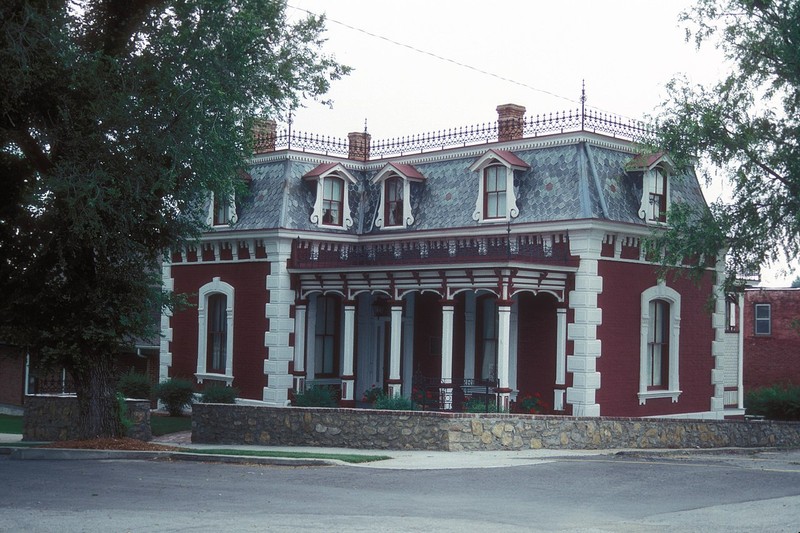Frederick Krause Mansion; Ben Ferrel Platte County Museum
Introduction
Text-to-speech Audio
Operated by the Platte County Historical Society, this local history museum is located within the Frederick Krause Mansion which was built in 1883. The elegant building is a fine example of Second Empire architecture and was meant to be a mini version of the Missouri governor's mansion. Frederick Krause, who was born in Prussia in 1837, operated a successful meat market in Platte City. The house was restored and visitors can tour it as well as view the museum's exhibits. The museum also offers events and also holds a local history archive. The house was added to the National Register of Historic Places in 1978.
Images
German immigrant Frederick Krause built this historic in 1883. It is now the Ben Ferrel Platte County Museum and is operated by the Platte County Historical Society. Krause operated a successful meat market as well as a livestock farm and brickworks.

Backstory and Context
Text-to-speech Audio
Frederick Krause was born on March 22, 1827, in Lagensalza, Prussia (now central Germany). His father, Gottlieb, sailed to the United States in search of a place for his family to live and decided on St. Charles County, Missouri. It appears the rest of the family didn't make the journey until 1853, however. By then, Gottlieb had died (he decided to go back to Germany in 1847 but was robbed in Baltimore, got sick, then died in 1849). Eventually, his widow, Augusta, decided it was time for the family to immigrate to America. She sold their possessions and arrived in Baltimore in 1852.
Krause worked as an apprentice butcher there before moving to St. Louis in 1855. Two years later he moved to New Orleans but, after experiencing the hot climate, soon relocated to Memphis where he got a job working for a butcher company. In 1860, he moved to Leavenworth, Kansas where relatives lived but didn't stay long. He settled in Platte City to open a meat market, which became successful and Krause emerged as a leading resident in the community. He also operated a brickworks and livestock farm. In 1873 the governor appointed him as a commissioner of the World's Exposition, which was held in Vienna, Austria.
In 1879 Krause bought the property to build this house based partly on the style of the governor's mansion which led to his choice of the Second Empire architectural style for this home. The house features a mansard roof with hexagonal slates (some of which form a rosette pattern), dormer windows on the roof with decorative woodwork, rusticated stone blocks at the corners of the walls, cast-iron work, and a front porch with decorative woodwork. There is a bronze fireplace in the sitting room that looks like the white marble fireplace in the governor's mansion.
Krause died in 1894. His wife, Nancy, lived in the house until 1917 when she sold it to Thomas Perry. It remained in the Perry family until 1973. The next owner sold it to the Platte County Historical Society and the local chapter of the Daughters of the American Revolution. In the coming years, the house was restored and converted into a museum.
Sources
Homepage. Ben Ferrel Platte County Museum. Accessed October 3, 2022. https://benferrelmuseum.blog.
Soper, Mrs. Betty. "Frederick Krause House." National Park Service - National Register of Historic Places Nomination Form. May 22, 1978. https://mostateparks.com/sites/mostateparks/files/Krause%2C%20Frederick%2C%20Mansion.pdf.
Wikimedia Commons: https://commons.wikimedia.org/wiki/File:FREDERICK_KRAUSE_MANSION.jpg
